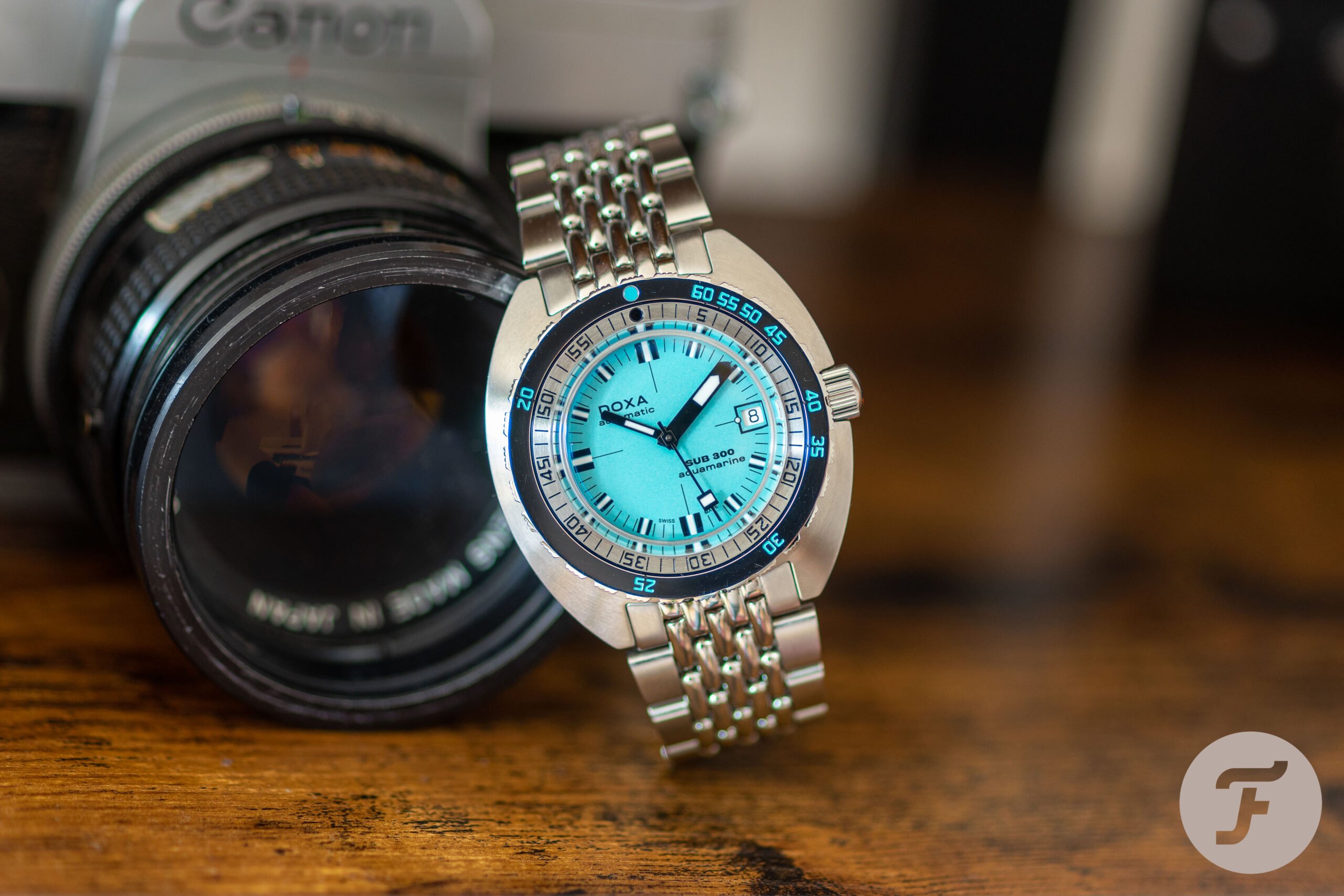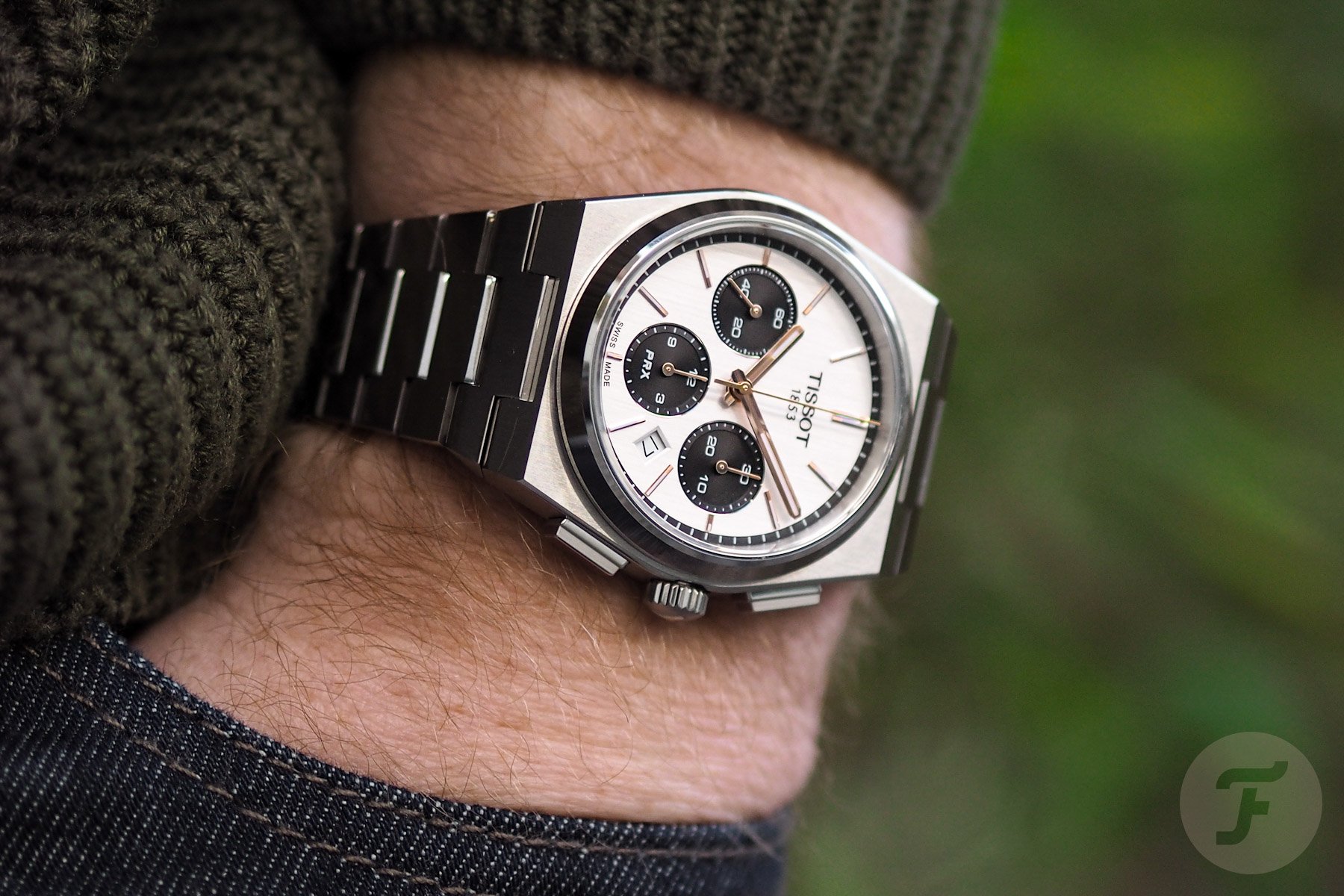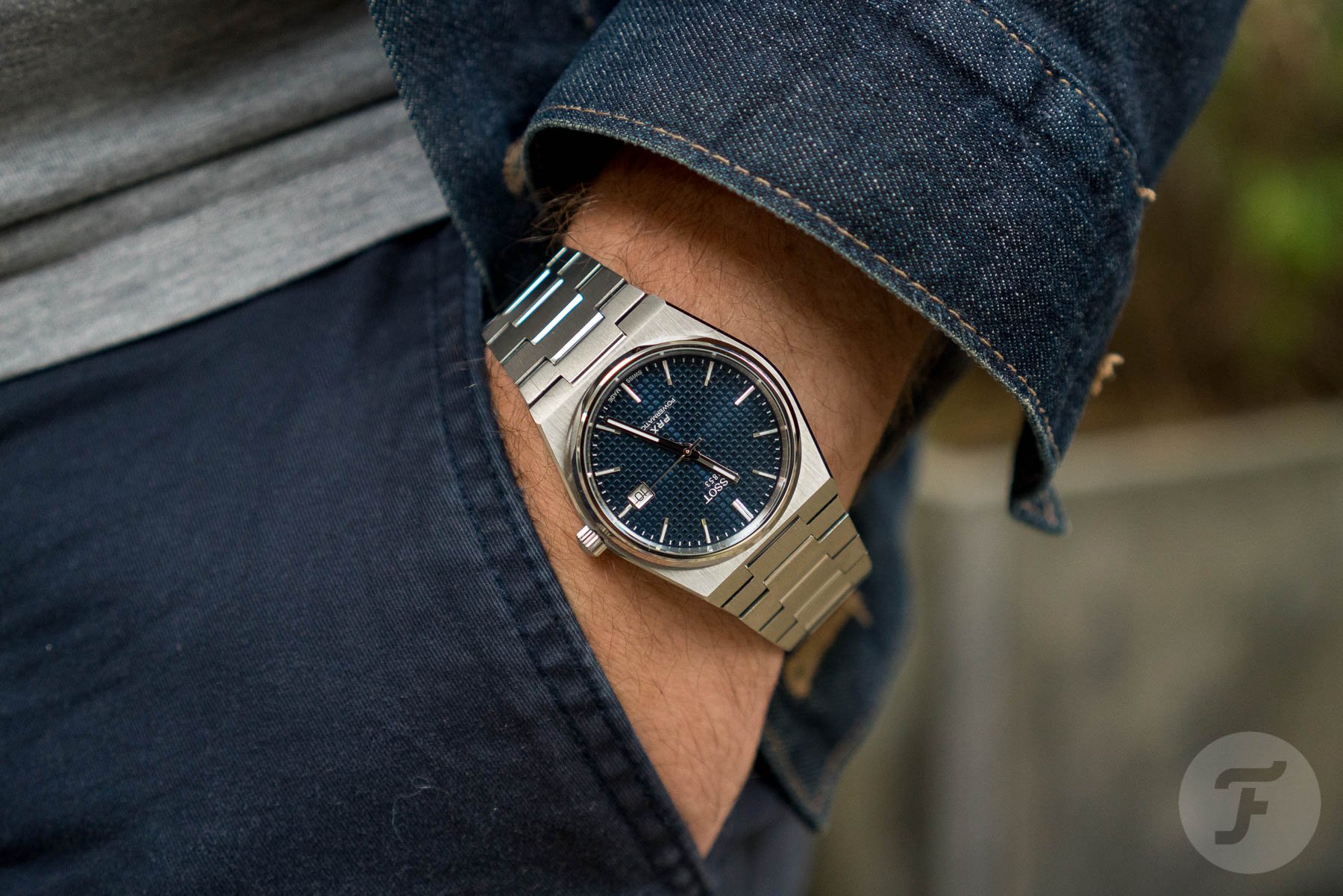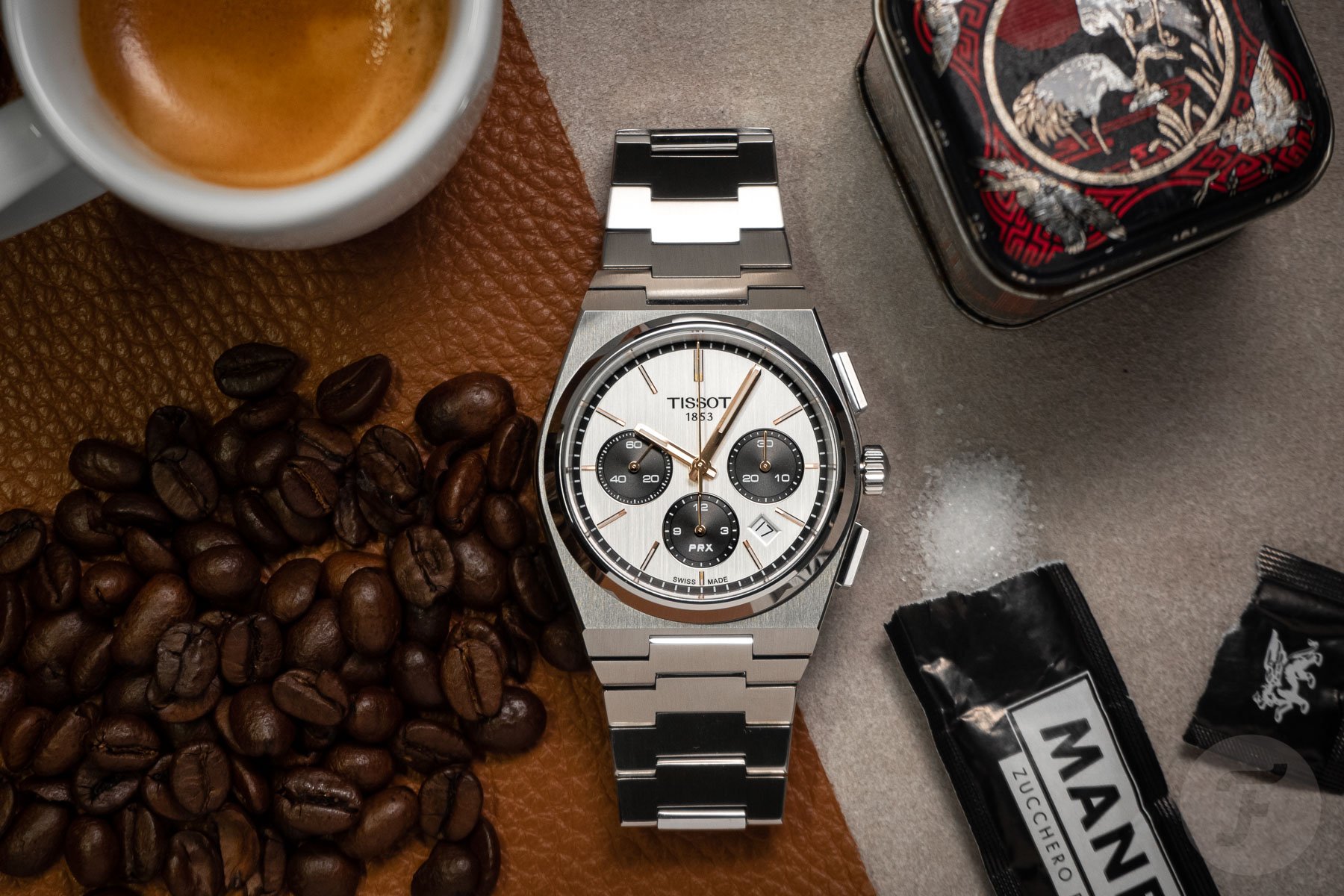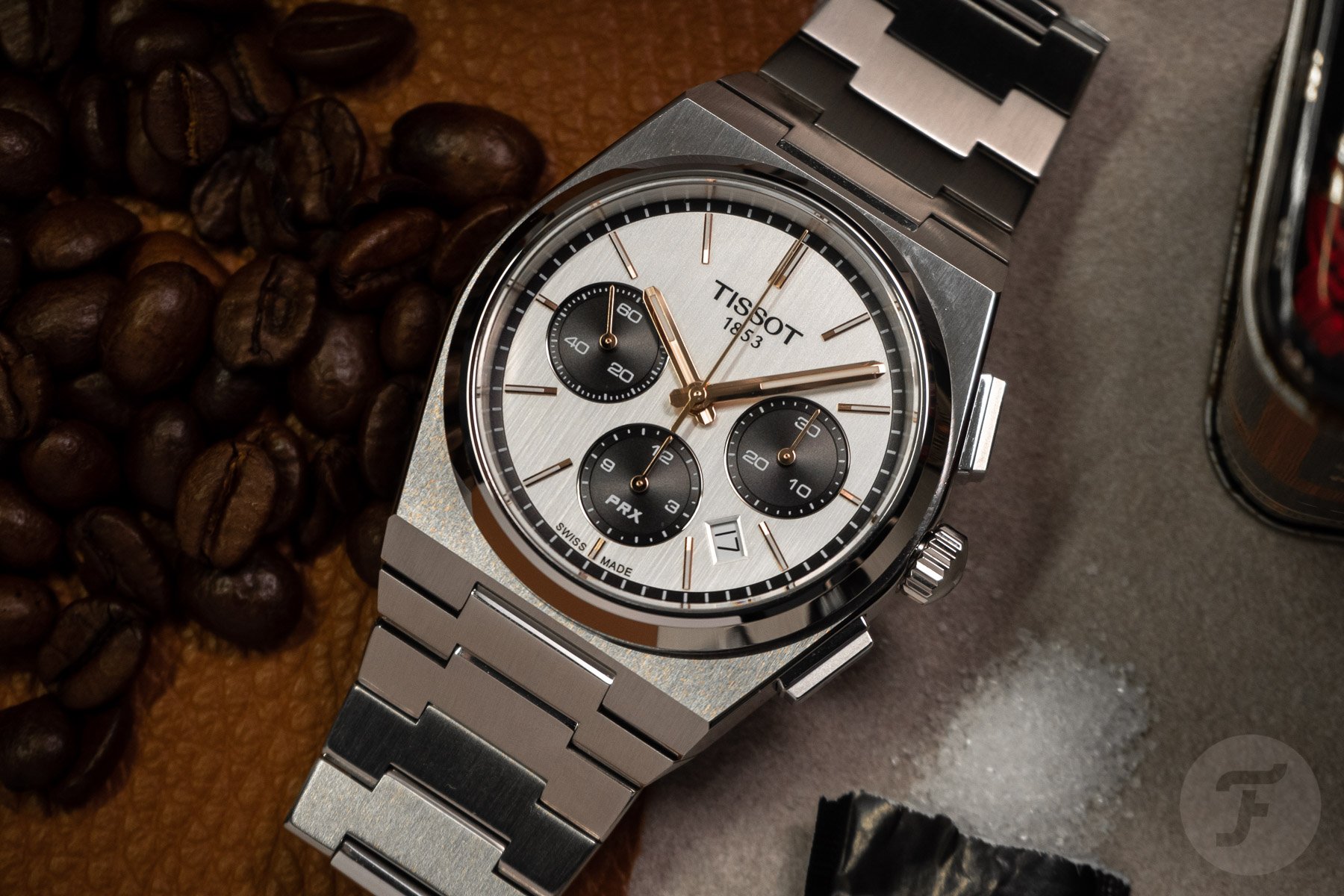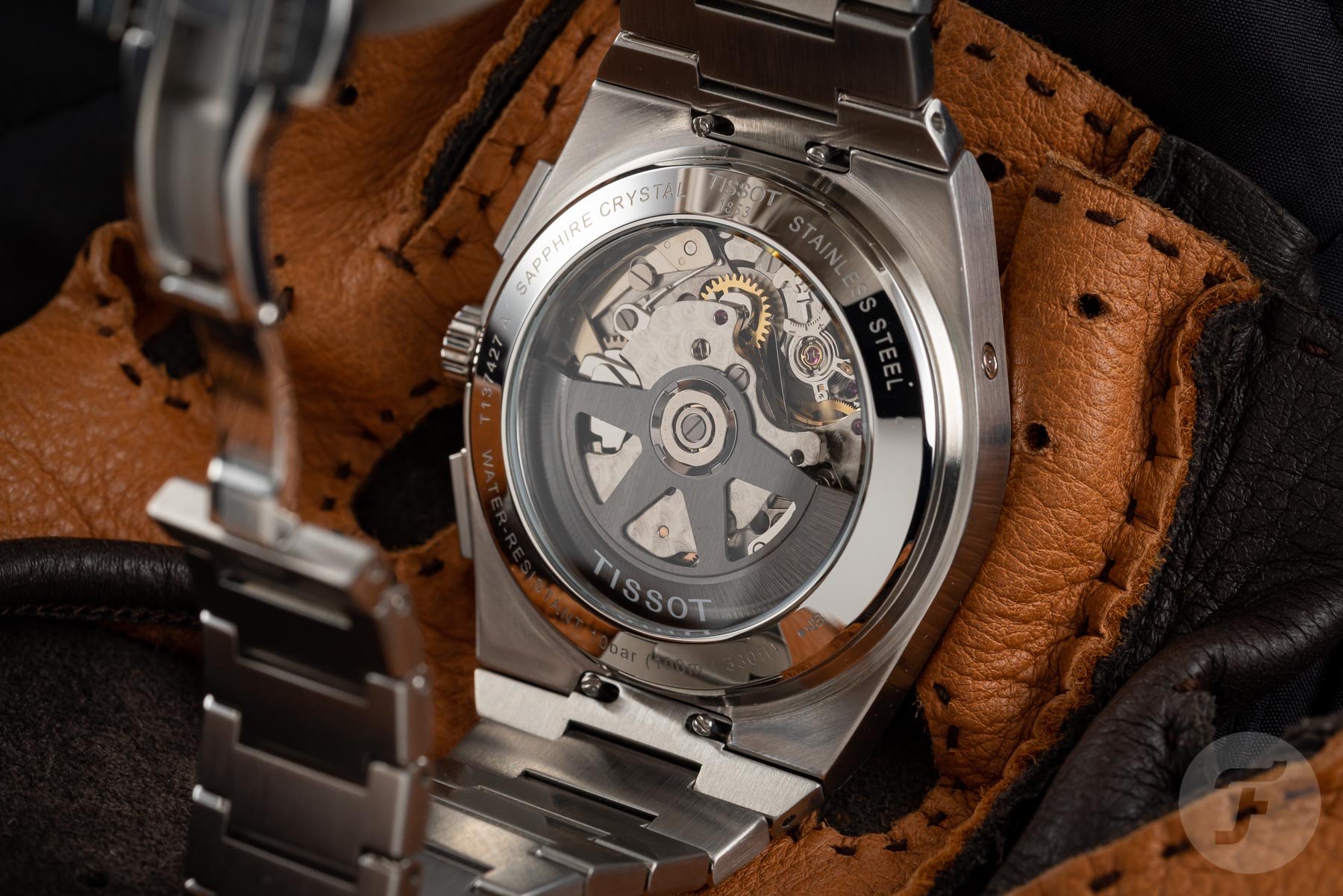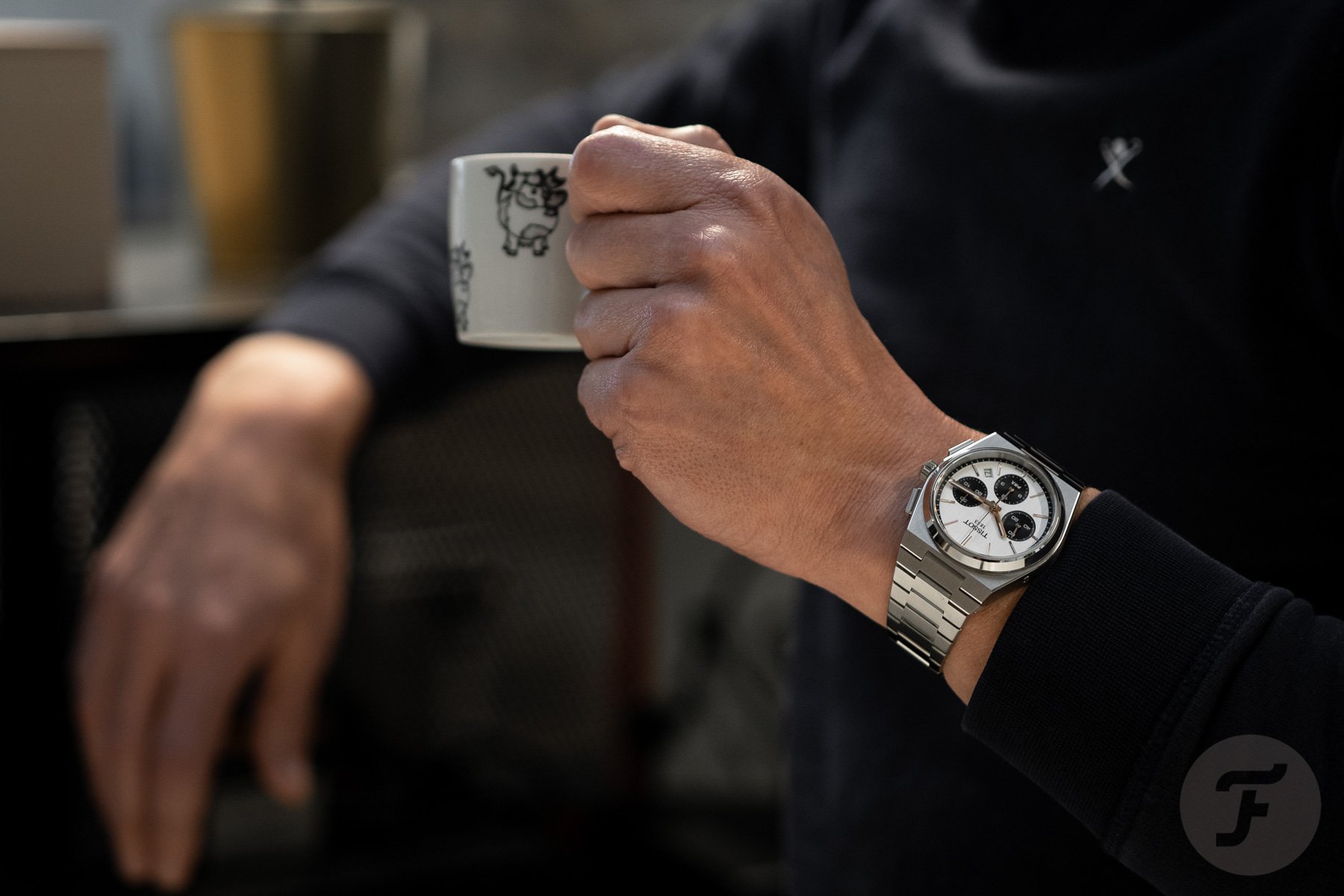Sunday Morning Showdown: Frederique Constant Highlife Chronograph Vs. Tissot PRX Chronograph
It’s that time again! There’s not a moment to relax for two of our writers on Sunday mornings. As you all know by now, Fratello team members battle it out in our Sunday Morning Showdown series. In the end, you, our wonderful readers, have the final say on who wins. This week, Nacho and Jorg go up against each other, choosing two modern sports watches with integrated bracelets to duke it out. Nacho is here to defend the brand-new Frederique Constant Highlife Chronograph. Jorg decided to back the Tissot PRX Automatic Chronograph. Let the battle commence!
This week’s battle is a bit different from our usual match-ups. Both the Frederique Constant and the Tissot fall into the category of modern sports watches with integrated bracelets. This is an incredibly popular category of watches that really took off when Gérald Genta designed the iconic Royal Oak. But what really sets these two contenders apart is their price points. At roughly half the price of the Highlife, can the PRX punch above its weight class? That’s up to you to decide, dear Fratelli!
Catching up with last week
But before Nacho and Jorg go at it, first let’s take a look at last week’s showdown. In the end, Thomas’s Doxa SUB 300 won the battle with a small margin against Daan’s Serica 5303. It comes as no surprise that the SUB 300 took the prize in the end. It’s a crowd favorite and all-around iconic watch. But in the end, it was a tight battle that showed that Serica has found a place in the hearts of our readers, the Fratelli. And who knows? It might just pull through for a win in the Summer Splash! With that out of the way, let’s focus on this week’s battle. Over to our two editors to make a case for their respective watches.
Jorg: Tissot PRX Automatic Chronograph
I’m going to jump right in and declare that I’m a big fan of the Tissot PRX! When Balazs showed me a picture of the quartz version that came out first, I was immediately sold, especially after he explained that the quality and finish of the watch were far above its €350 price point. But the mechanical version was obviously going to be the real deal. When that arrived, it was even better in my opinion. The Powermatic 80 movement was the perfect caliber to keep the price very affordable. On top of that, the added dial texture not only set it apart from the quartz version but also added an extra stylish element that looks great.
The modern PRX was inspired by its predecessor from the 1970s. It also takes inspiration from other famous ’70s designs, especially the Rolex Oysterquartz. But, if anything, the PRX shows that its design is as relevant as ever. The PRX Powermatic 80, as it is officially called, has a very important place in the current watch universe. It is THE affordable modern sports watch with an integrated bracelet. There is simply no better option for €695 that integrates (pun intended) tons of style, this level of quality and finish, a story from the past, and a reliable slim movement in a currently popular category. For me, the watch is incredibly hard to beat at the sub-€1,500 price point.
My first date with the PRX Chronograph
What about the PRX Automatic Chronograph? When I first saw the panda-dial version of this watch, I was really impressed. The dial colors in combination with the gold details look incredibly stylish. But when Robert-Jan handed me the watch, I quickly noticed several differences from the time-only version. First off, Tissot decided to beef up the case quite a bit. The diameter increased from 40mm to 42mm, which is significant but understandable. But the height of the case also increased from a slim 10.9mm to a beefy 14.54mm. Add the integrated bracelet and the 184g weight, and you will understand that I was intimidated, to say the least.
While I usually do not shy away from wearing bigger watches, I have been gearing more towards watches that are a bit smaller. So, was this a bit too much, even for my taste and 18.5cm wrist? I found out quickly that it was the complete opposite. I put the watch on my wrist, looked at it up close, and wore it for a full day, liking it more and more by the minute. At the end of the day, I had to conclude that Tissot did it again. The PRX Automatic Chronograph is definitely different from its time-only counterparts, but it is the perfect addition to the PRX line-up.
Choosing the right movement
The reason for the increased size is obviously the movement. Tissot decided to equip the PRX Automatic Chronograph with the ETA A05.H31 movement. As Robert-Jan explained in his review, it is basically a new version of the Valjoux 7753. The movement operates at 28,800vph and has a power reserve of 60 hours. This movement has a layout with sub-counters at three, six, and nine o’clock, as well as a date window at four-thirty. If you’re familiar with my love for the Zenith El Primero, you’ll understand that I don’t mind that position for a date window on a chronograph at all. A practical downside of the movement is that the date corrector is placed on the side of the case at 10 o’clock.
However, I much prefer this layout with the Tissot logo proud on top rather than the traditional Valjoux 7750 layout. The dial also shows wonderful overall attention to detail. The base color of this panda dial is not a stark, flat white. Rather, it has a metallic shimmer and features a vertical brushed finish for a nice detailed effect. The black sub-dials feature very fine circular graining to create even more depth. Add the gold-colored hour markers and hands, and we have a winning combination. And it’s not just a winner for today’s battle but also another homerun from Tissot after the time-only models. At €1,495, if you can pull off the size and weight, this watch is the best in its class. But the PRX Automatic Chronograph can definitely punch above its weight class as we undoubtedly will see today. I have faith in you, Fratelli! Bring it on, Nacho.
Nacho: Frederique Constant Highlife Chronograph Automatic
Thanks, Jorg! And thank you for giving the Tissot PRX Chrono the high praise it deserves. And no, there’s no “but” or “however” following that. I genuinely think that it’s a brilliant watch, especially for the incredibly attractive price. But I’m here rooting for a different watch. My pick for today’s Sunday Morning Showdown is the Frederique Constant Highlife Chronograph Automatic. For those of you who know me, you might think that it’s a rather odd pick, but hear me out. I’ve had the chance to see, feel, wear, and photograph both of these watches, and I must say that as much as I love the PRX, this piece from Frederique Constant comes out on top. And if you want to know why, read on. I’ll do my best to explain exactly why I think the Highlife deserves the win!
As you can see, at first glance, these watches have a lot in common. They both feature a tri-register chronograph with sub-dials at three, six, and nine o’clock, as well as a date at four-thirty. Both watches have an outer track matching the color of the sub-dials. They’re both integrated-bracelet designs (though the Frederique Constant is on a leather strap in these pictures, it is also available on a steel bracelet), and flipping the two watches over, you see the automatic chronograph movement through an exhibition case back. But what is it that truly sets these watches apart?
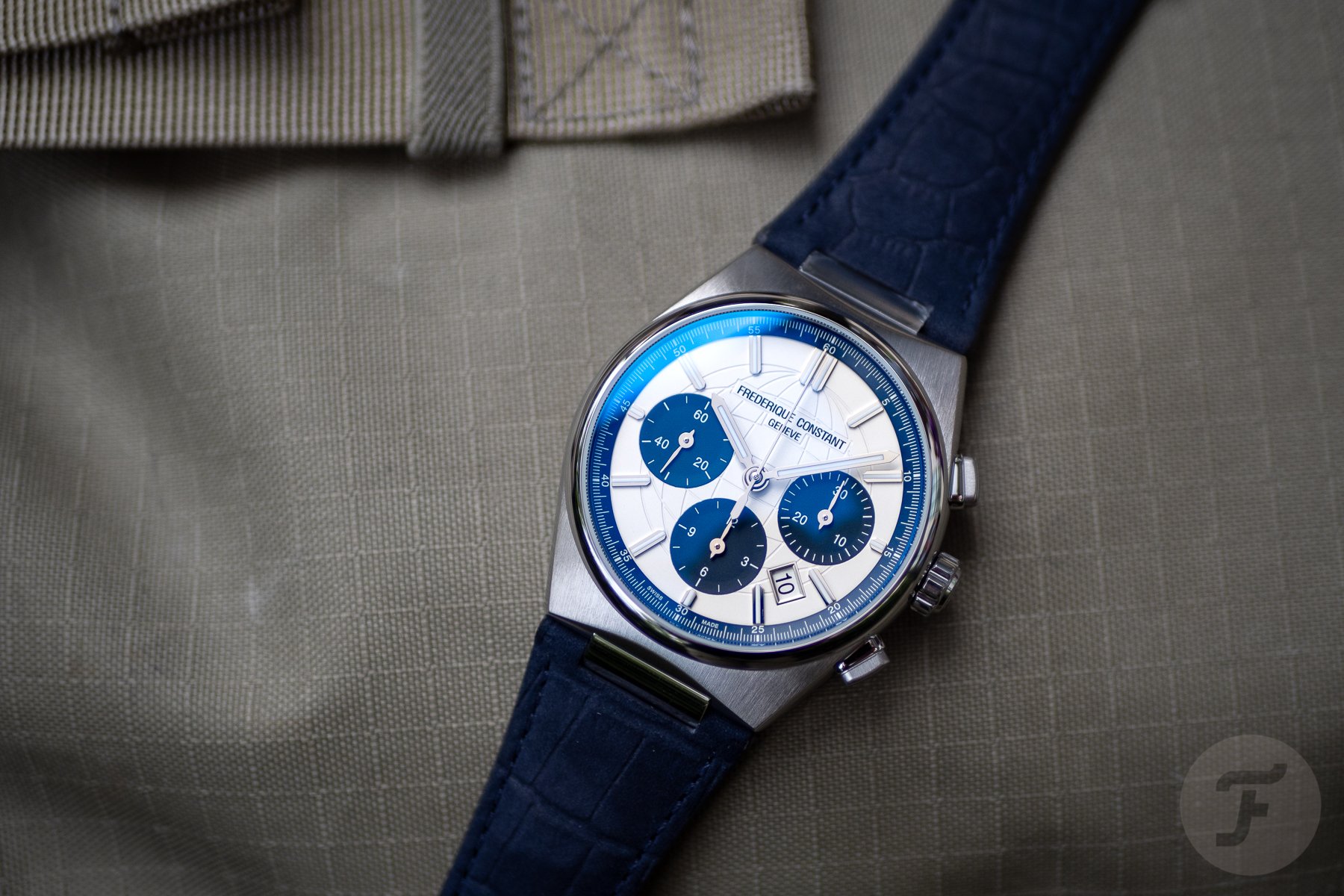
A matter of refinement
To me, the main thing that separates the Frederique Constant Highlife Chronograph Automatic (other than the mouthful of a name and the fact it costs twice as much as the PRX Chrono) is the level of refinement. This might come across as a rather general observation, but let’s jump into it and get a little bit more specific. Recently at Fratello HQ, we’ve found ourselves discussing the fact that the slim-cased automatic chronograph is an endangered (if not extinct) species. A couple of weeks ago, I got to see an incredible Zenith A386 MkI from 1969 (belonging to Romain Marietta — director of product development and heritage at Zenith), and what struck me was how thin the watch stood despite its domed acrylic crystal. It made me wonder why modern automatic chronographs are built to be so thick.

French DJ and producer The Avener wearing his Highlife Chronograph
The Tissot PRX Chronograph comes in at 14.54mm tall, and though not the biggest difference, the Frederique Constant measures 14.22mm in height. Now, as watch enthusiasts, we know that measured dimensions are one thing, while how those dimensions feel on the wrist is another thing entirely. In the case of the Highlife Chronograph Automatic, those fractions of a millimeter coupled with a sleeker, less boxy design than the PRX make for a rather slim-feeling watch on the wrist. This, coupled with 1mm less in terms of case diameter makes all the difference in the world. The Tissot is clunky and takes some getting used to, but the Highlife Chronograph wears like a dream from the moment it meets your wrist.
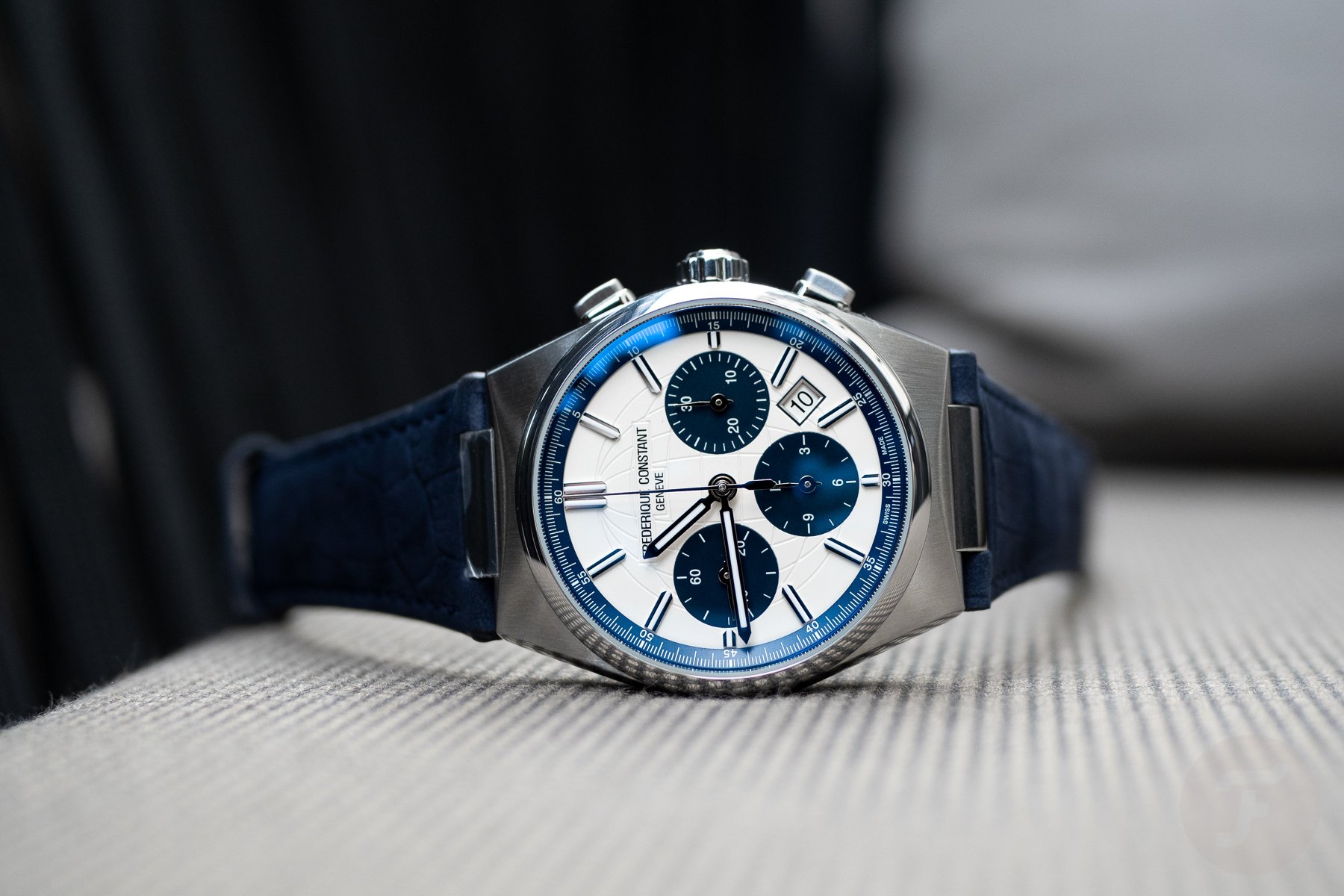
On a whole other level
It’s worth mentioning some other details that (in my opinion) elevate the Highlife Chronograph beyond the PRX’s reach. I don’t know about you, but the boxy case of the PRX is no match for the brilliant tonneau case of the Highlife. The more curvaceous design feels infinitely more refined than the slab-sided Tissot. You also don’t have that pesky (and rather ugly) date pusher at 10 o’clock, as the date is simply controlled through the crown. Finally, the Frederique Constant comes with the nubuck alligator strap that you see in the pictures, as well as a full stainless steel bracelet AND a rubber strap. And this is quite a consideration for those of us who aren’t willing to settle for just one option when it comes to wearing our watches. Tissot does not yet offer a different strap for the PRX Chronograph.
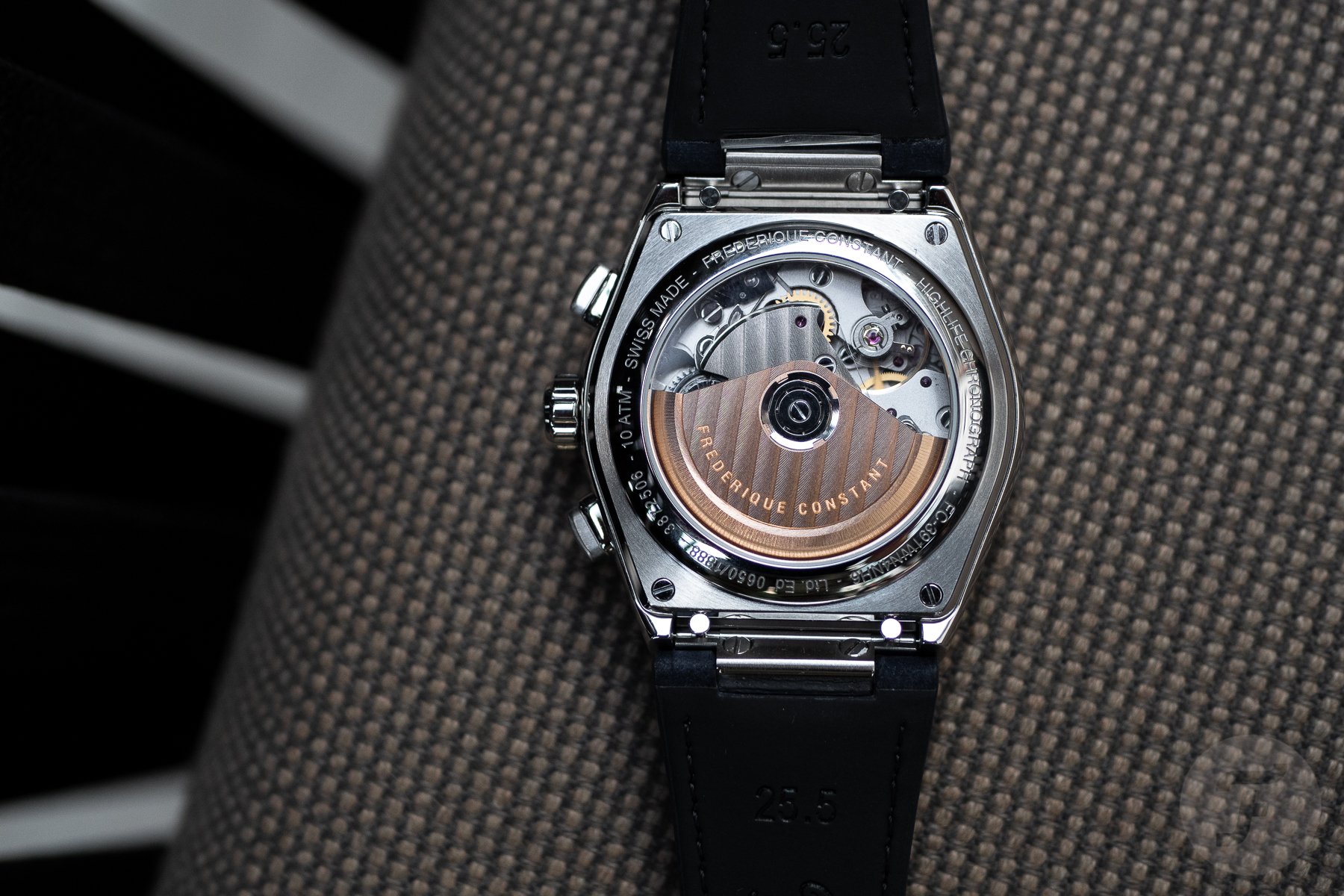
The golden elephant in the room
One last thing to note is that in my time wearing the PRX, I couldn’t help but wonder what it would look like without the pink gold details. I get that Tissot wanted to add a bit of flare and color, but a sacrifice in versatility is not the way to go. Now, before I wrap it up, let’s address the elephant in the room. I’m talking, of course, about the price difference between the Tissot and the Frederique Constant. Whereas the PRX Chronograph will set you back €1,495, the Highlife Chronograph Automatic costs a little over twice as much at €3,295. Now, this is probably the biggest “downside” of this watch. However, I feel that for what you’re getting, if you can afford to take the leap up to the Highlife, it’s well worth it.
In the end, those small details add up to make quite a difference.
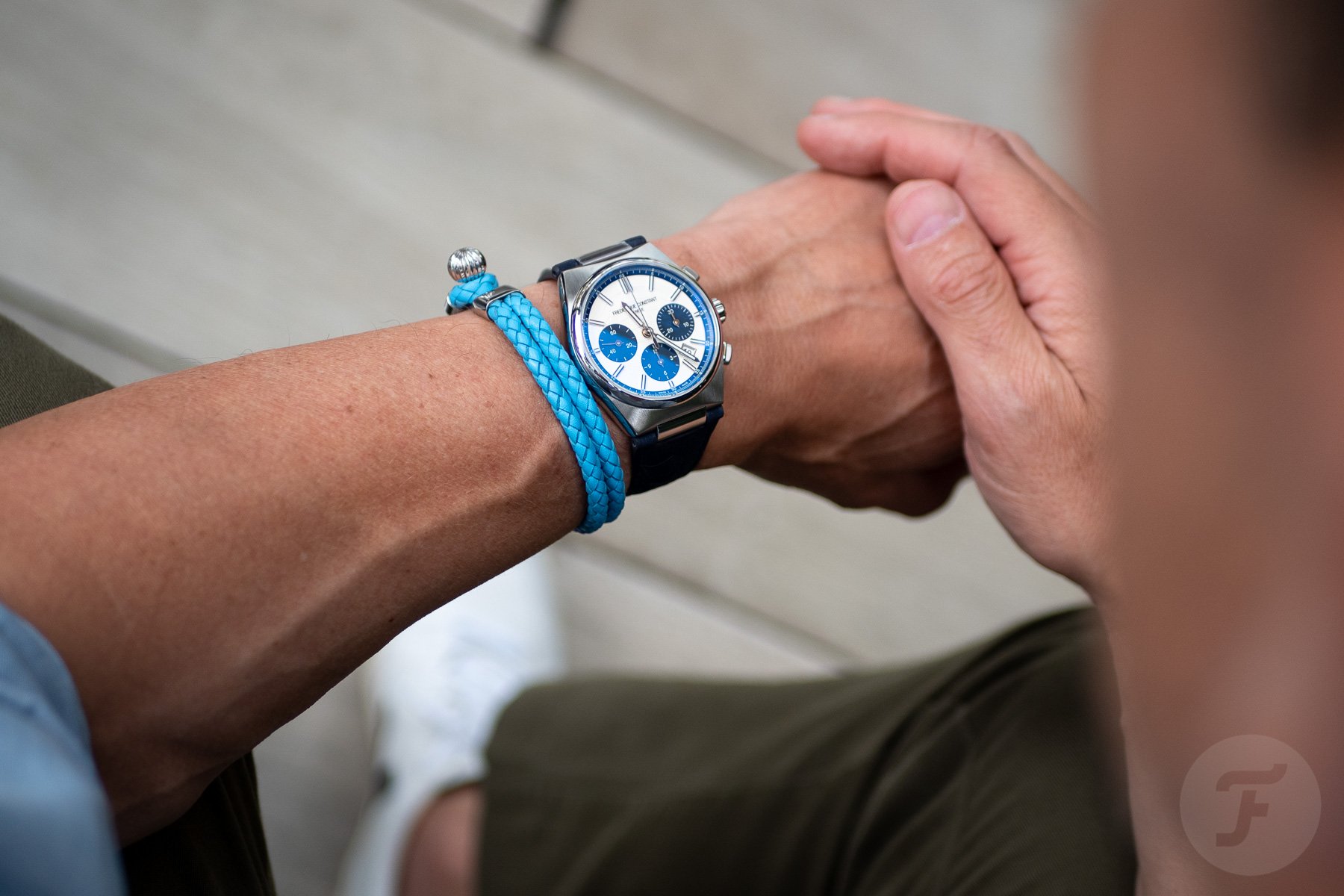
It’s up to you now
So, who are you with!? Would you pick Jorg’s chunky but stylish-looking PRX Automatic Chronograph? Or would you go for Nacho’s brand-new and impressive Highlife Chronograph Automatic? With the similarities in both movement and design, this should be as close a matchup as we’ve had on Sunday Morning Showdown. Let’s bring this one to a vote, and down in the comments, please let us know whose side you’re on and why.

